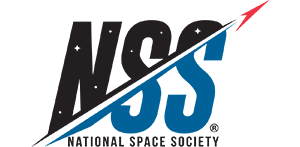
Glass and Ceramics
Larry A. Haskin
A variety of glasses and ceramics can be produced from bulk lunar materials or from separated components. Many glassy materials have been described in previous studies (Mackenzie and Claridge 1979, Criswell 1980). They include sintered (heated and pressed) regolith, quenched molten basalt, and transparent glass formed from fused plagioclase. No research has been carried out on lunar material or close simulants, so properties are not known in detail; however, common glass technologies such as molding and spinning seem feasible (fig. 7). Uses of glass include structural applications (bricks, slabs, beams, windows) and specialty applications (fiber strengtheners, insulation, heat shields, cables, light pipes). See figures 8 and 9.



Among the high-leverage uses of fused silicate materials in the proposed utilization of nonterrestrial resources are the fabrication of heat shields for orbital transfer vehicles traveling from the Moon to Earth and the use of sintered or melted and sand-cast soil for structural support in unpressurized lunar shelters. The work of Blacic (1985) indicates that lunar glasses made under the anhydrous, hard-vacuum conditions on the Moon could have very high strengths and thus be quite applicable to structures in space. Prestressed beams made with sintered bricks, using fiberglass or iron bars as tendons, may find early application as structural members.
Ceramics like those used on Earth could be produced by chemical processing of raw lunar material; for example. fractional volatilization of plagioclase could lead to melts for ceramic applications. The recombination of plagioclase with the residue of the ilmenite reduction process (metallic iron and titanium dioxide) could yield cermets with interesting properties. Ceramics might find uses similar to those of glasses.
Alternative means of preparing glasses and ceramics appear to be direct heating using solar concentrators (Ho and Sobon 1979), electrical resistive heating, and microwave heating. Direct use of waste heat from nuclear reactors used in space or on the Moon may also be practical but might require complex heat exchangers, heat pipes, and other devices for thermal control. The microwave heating concept is described in more detail in the first appendix to this part. It offers an efficient means of converting electrical energy into heat, delivered locally and in a controlled manner to the target to be heated. Additional work is necessary to define optimum thermal processing systems for glass and ceramic products and the properties of the heated lunar material. It will be desirable to have access to good simulants of lunar regolith or increased quantities of real lunar soil to further such necessary research.
The production of more complex ceramics, composites, and even semiconductors may prove desirable at some point during the development of a lunar base. Although perhaps not within the scope of most easily obtainable materials, semiconductors produced from lunar materials could have a major effect on the means of producing electricity on the Moon. Silicon-based photovoltaic devices could be constructed using silicon reduced from silicate minerals, covered with thin glass layers made from silicon dioxide, supported by iron, aluminum, or glass structures, and supplied with iron wires to conduct currents. Lunar ilmenite has interesting semiconductor properties (see fig. 10) and might be usable in converting sunlight to electricity. The preparation of photovoltaic devices is now well known on Earth; however, adapting these processes to a lunar environment would be quite challenging.

|
Curator: Al Globus If you find any errors on this page contact Al Globus. |
 |
This site was hosted by the NASA Ames Research Center from 1994-2018 and is now hosted by:
